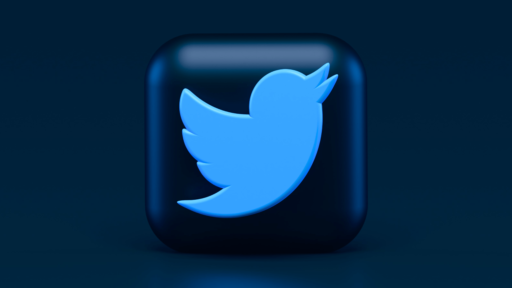How do you ask someone to do you a favor? Or tell your kids to clean their rooms?
The way you ask, tell, or suggest something plays a big part in the results. And if you want to boost conversions, the same logic applies. It’s called CRO (conversion rate optimization). And sometimes, you’ve only got one line to do it.
It takes a lifetime to learn copywriting. But there are a few quick fixes you can learn now. And they’ll transform your conversion rate.
Here are 8 of my favorite copywriting hacks to increase conversions:
- Speak like your customers do
- Stick to the point
- Talk directly to one reader
- Prove it with stats and facts
- Show the value you bring
- Entice with CTA (call-to-action) buttons
- Social proof gives instant credibility
- A/B test to optimize results
What are the different types of conversions?
Just a quick one, conversions don’t always mean sales. There are lots of other types you could focus on.
Things like:
- Email newsletter opt-ins
- Downloaded content marketing resources
- Form completions
- Demos booked
- Free account signups
- Push notifications

Source: GIPHY
But all can be improved with your copywriting.
Speak like your customers do
Who is your target audience? How old are they? Where are they from? These are all things you need to know.
Then you have to go deeper. What motivates them? What are their pain points? How do they communicate these? The answers will help create your brand voice. And the copy that’s based on it.
People buy from brands they relate to. And the fastest way to boost conversions is to match the way they speak. If you’re lucky enough to have separate marketing and sales teams, there needs to be overlay. If it’s just you, this part will be easier.
Here’s an example:

Source: Marketing Examples
Your brand voice should be based on your target audience. So, you need to listen to the language they use. Then use that to write your marketing copy. Because then it’ll resonate with them.
SEO writing is important to keep search engines happy. But UX (user experience) should be your priority. So, you need to write for humans.
Contractions like “it’s” and “there’s” keep it informal. There’s no need to be formal. Even if you’re in a more traditional industry. Everyone prefers simple language.

Source: WordStream
Just how conversational you choose to be is up to you.
Stick to the point
Digital marketing doesn’t need to be complicated. The average US adult reads at a 7-8th grade level. So to boost conversions, keep it simple.
Two of the world’s most famous authors have thoughts on the next tip. First, Mark Twain. He suggests killing adjectives. Sounds violent. Let’s give it some context.
Mark Twain championed “short words and brief sentences.” Because adjectives make things “wordy” and “diffuse”. To take you back to school, adjectives modify a noun. So, a terrible book. Or an old man. (I had to remind myself).
According to Twain:
“They weaken when they are close together. They give strength when they are wide apart.”
You may not agree with this. But the idea makes sense. Of course, you want to describe your product in detail. But self-editing is the most important copywriting process.
So, hit all your main points. But keep to the point.
Wandering Bear Coffee use some adjectives. But the bullet point format hammers them home.

Source: Wandering Bear Coffee
B2Linked’s homepage is an awesome example. They’ve cut down their whole service to one line. They’re also nailing the conversational tone with that “yep!”

Source: B2Linked
Next up, Stephen King. He famously said, “The road to hell is paved with adverbs.” So, I guess I’m on my way.
I am terrible for using the word “really”. It’s something I (really) need to work on. Because it can affect the impact of copywriting.
Adverbs end in “ly”. Most of the time. So, keep an eye out for them. It’s a hard habit to break. (But I’m going to try.) Here’s a checklist for clear copywriting:
- Cut adverbs and adjectives where you can
- Swap phrases for simple words
- Shorter is (usually) better
- Replace passive with active verbs
- Read it out loud to hear how it sounds
Try stick to these whenever you write. Practice is the only way to get better.
Talk directly to one reader
You’re hoping to have thousands of followers and subscribers. I get it. But don’t try speak to all of them at once. Draw each reader in by speaking to only them.
It makes it feel like a conversation with a friend. Then people are pulled into the story you’re telling. Good Pair Days rock at this:

Source: Good Pair Days
See what I mean? You almost find yourself answering out loud.
Lemonade’s Giveback program could be all about them. But they bring you into the narrative. And it makes you feel like you’re a priority.

Source: Lemonade
See the difference when companies don’t do this?

Super impersonal. Very detached. And those long-winding sentences?

Source: GIPHY
BBC Food is slightly better. But still not great.

Source: BBC
Where’s the focus on the customer? It’s all “Our webinars”. “Our magazine”. What about us?
Talk to an audience of one. And they’re much more likely to respond.
Prove it with stats and facts
How many people have bought your product recently? Have you won any awards? If you want to boost conversions, tell people. But no pages and pages about how great you are.
Let numbers do the talking. And keep it short and sweet. Buffer has these 4 metrics in the middle of their homepage:
- 10 years in business
- 140k users
- Over 100k monthly blog readers
- Over 1.2 million social followers

Source: Buffer
It’s a quick example of social proof. But we’ll get to that in a bit.
Airbnb does it with their landing pages for potential Hosts. It automatically finds your location. Then tells you how much you could earn by signing up. Before you’ve even asked.

Source: Airbnb
Talkspace lets a simple survey show why users choose their app over traditional therapy.

Source: Talkspace
Numbers are a way of promoting yourself without having to be promotional. But how do you find your own to boost conversions?
Try these ideas:
- Dip into your Google Analytics
- Send current customers a survey
- Build a free calculator
- Check your CRM
- Research relevant reports and whitepapers
See what you can find. And get creative with what you show and how you show it. But make sure you have the proof to back it up. You know. In case someone asks.
Landing pages should highlight value
How do you turn potential customers into loyal ones? It all starts with your landing page. And it’s something a lot of marketing campaigns get wrong.
It doesn’t matter if you use WordPress, Wix, or whatever. Every page on your site needs to be part of your value proposition. Why should people care about what you’re selling? How is it going to affect their lives?
It’s the first thing a lot of people will see. So, you need to make what you do immediately clear. But like we’ve learned, don’t make it all about you. Put the focus back onto the customer.
Like this example from VideoFruit. It’s so down-to-earth. But brilliant. The headline identifies the user’s problem. Then they tell them how to solve it with the next few lines. Finished off nicely with a big green CTA button to progress.

Source: Crazyegg
Slack uses all the tricks in the book to boost conversions with theirs. They’ve got a free trial. They show all the companies that trust them. And they summarize their value in a great headline:
“Great teamwork starts with a digital HQ”.

Source: Slack
Muzzle is designed to block embarrassing notifications. And they use their landing page copy to get creative. It shows exactly how the product works. And the kinds of messages you don’t want appearing while screen-sharing.

Source: Muzzle
Landing pages help people decide if you’re worth it. So, why not confront them with the very problem you solve? Muzzle has nailed it.
Entice with CTA buttons
CTA buttons aren’t just for eCommerce product pages. They should be on all of your webpages. And even the smallest tweaks can help boost conversions.

Source: Marketing Examples
Customer-centric Amazon is super particular about theirs. Especially for 3rd-party ads. They have a whole section in their brand guidelines about them.

Source: Amazon Ads
Now, the design has a big part to play. Think font, size, and color. HubSpot did a test a while back and found red performed better than green. Which wasn’t expected. But this might not be the same for you.
You can also try adding a button header to make it clearer too. Like this “30-Day Money-Back Guarantee” above the popular “Buy Now”.

Source: GoSquared
But this part is where you can have fun. Sure, “Try now” and “Find out more” work. But you can do so much more with your copy. Here are some of my favorite examples.
I Done This is a team productivity app. And they sum up their value proposition with the first CTA button you see:
“Start being productive”. Genius.

Source: I Done This
Hulu shows you exactly what you’ll be paying for with their “Get the Disney bundle”.

Source: Hulu
Glossier appeals to their target audience with a low-key “I’m in”.

Source: Glossier
Butternut Box sells fresh dog food subscription boxes. They make it personal from the get-go. Then add a bit of data/social proof. And then invite you to “Join the pack”.

Source: Butternut Box
One thing to watch out for, though. I know it’s tempting to show people what they’re missing. But these kinds of opt-outs can be annoying:
- “No thanks, I convert enough visitors”
- “I don’t want more leads”
- “I hate free stuff”

Source: OptinMonster
Maybe it works. But I’d prefer a simple “X”. What about you?
Build trust with social proof
Humans don’t take most things at face value. Especially online. You may already have a good conversion rate. But it can always be improved.
Social proof is the fastest way to build trust. And boost conversions. Because it adds instant credibility to the value you’re promising.
There are plenty of ways to display it:
- Testimonials and reviews
- Expert social media takeovers
- Case studies and referrals
- User-generated content
- User or customer statistics
A couple of the best places for social proof are your landing pages and social ads. And all it takes is a simple line.

Source: The Hustle
Like this one. “Join 100k football fans” is specific. It shows the exact target customer. And how many are choosing to get involved.
You can refer to lots of things for social proof:
- How many 5-star reviews you’ve got
- A quote from someone in your industry
- How many downloads you’ve had
- Awards or titles you’ve been given

Source: Marketing Examples
It’s showing other people have faith in you. And we all need our choices validated by others. Especially when we’re spending money. That’s why it’s such a popular marketing psychology tactic.
So, how can you get this information? Just ask people. Try sending out some personalized email templates. If you’ve got phone numbers (and customers have okayed SMS marketing), text them.
Offering incentives usually helps increase response rate. So, see if you can offer a discount or freebie. It’ll be worth it in the long run.
A/B test to optimize results
It’s one thing to track website visitors. But do you know your current website conversion rate? Or your bounce rate? It can tell you a lot about the quality of your copy.
Everyone’s conversion funnel is different. And heatmaps can be a great way of figuring out your customer journey. But we all want a higher conversion rate. So, functionality is key.
Let’s assume you’ve got that covered. The right CTA (call-to-action) turns visitors into leads. And it can encourage people to hit the checkout button. Rather than abandon that shopping cart.
So now, it’s time to A/B test. And figure out what works. You want to trial 2 different types of copy and see which converts better.

Source: MailUp
Yes, design plays an important part. Try different colors and styles. But it’s more than that.
Try variations of your copy. That’s what’ll have the most impact. And trial comparisons in the places you’re trying to boost conversions:
- Social media ads
- Landing pages
- Product packaging
- Checkout processes
- Content marketing
- Newsletters sign-ups
- Marketing pop-ups
- Email list follow-ups
The smallest tweak can have big results.

Source: Marketing Examples
This newsletter increased conversion rates from 32% to 45% with a few small tweaks:
- Kept it short
- Highlighted it’s free
- Added reading time
- Social proof statistic
- Showed the value people get from it
You should always be A/B testing. Even if you find a winner. There could be a variation that works even better.
Conclusion
Whatever your conversion goals, copywriting can help. And it doesn’t take much to improve yours.
Big hat tip to Harry Dry here. He compiles the best advice from around the web on Marketing Examples. I found a lot of great ideas there.
The biggest takeaway here to boost conversions is to create a memorable brand voice. Because all your copy will be based on it.
For that, you need to know your audience inside out. So, put a lot of time into audience research. And learn to speak to them in a way that’ll resonate. That’s how you create copy that converts.
Which of these copywriting hacks will you be trying? Are there any brands with awesome CTAs? Let us know below!





